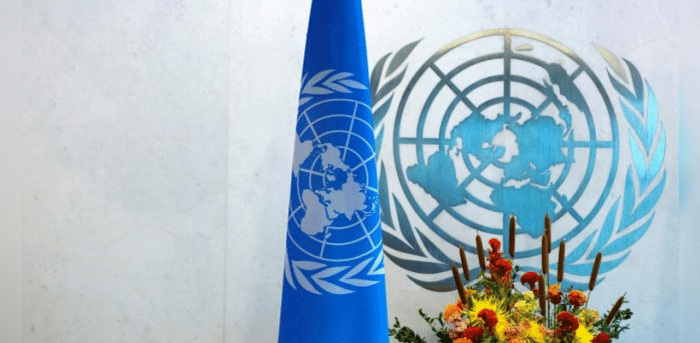
“Don’t speak to us of the United Nations. We have nothing to do with the UN; we are averse to the United Nations Organisation (not to its charter) …[You] should have patience in seeking to resolve the Kashmir issue; haven’t we already waited for seven or eight years on the Taiwan issue?” Premier Zhou Enlai of the People’s Republic of China (PRC) had made these remarks in Beijing on February 16, 1957, to Pakistani Ambassador Ahmed, who had brought him a letter from Pakistani Premier HS Suhrawardy.
The Chinese premier added that “the imperialists will make use of the disagreements to instigate a conflict. Now, the UN is once more getting involved; this is very dangerous. Nothing good comes from UN involvement; thus, we are worried about the possibility of a local conflict…Imperialists want to make use of discord between Asian countries to instigate conflicts and profit from them; they are happy to see a conflict in Kashmir.” These minutes are sourced from the digital archive of the Washington DC-based Woodrow Wilson Center.
On January 5, Global Times, a prominent Chinese State-affiliated newspaper, summed up in an editorial the convergence between China and Pakistan on J&K. The editorial quoted the foreign ministers of both countries as they invoked the UN Charter and Security Council resolutions on Kashmir.
The occasion was the 72nd anniversary of the Security Council Resolutions adopted on January 5, 1949, at UNHQ in New York, which stated that the question of the accession of the State of Jammu and Kashmir to India or Pakistan will be decided through the democratic method of a free and impartial plebiscite. The resolution had detailed prerequisites for the plebiscite, including the withdrawal from the State of J&K of tribesmen and Pakistani nationals from its present-day Pakistan-controlled parts.
The first time China invoked the resolution was in 1964, when Premier Zhou Enlai visited Pakistan, and along with President Ayub Khan “expressed the hope that the Kashmir dispute would be resolved in accordance with the wishes of the people of Kashmir as pledged to them by India and Pakistan.” The change in the PRC’s position to involve the UN on J&K came after the 1963 Sino-Pakistan Frontier Agreement between Ayub Khan and Zhou Enlai that ceded a part of the former princely state of J&K to China.
In 1971, the PRC replaced the Republic of China (RoC, or Taiwan) in the UNSC, a move facilitated by the US-PRC détente. One of the frequently invoked positions of the PRC in the UNSC is the “need to respect sovereignty and peaceful resolution of issues”. It draws a distinction between human rights issues and those pertaining to peace and security and argues that the discussion of issues should be platform-centric.
For instance, in October 2018, the PRC objected to taking up the discussion on the report of the UN Human Rights Council (HRC)’s Independent International Fact-Finding Mission (FFM) on Myanmar in the General Assembly and the Security Council. The FFM was a derivative of the 2017 Rohingya crisis. PRC’s argument was that the appropriate forum for discussing human rights issues is Geneva, the HQ of the HRC, and not New York, the HQ of the UN General Assembly and the Security Council.
In fact, on J&K, in March 1994, the PRC, along with the Islamic Republic of Iran, bailed India out when Pakistan moved a resolution at the HRC at Geneva seeking a fact-finding mission to J&K. However, the events since August 2019 have taken a different trajectory in the backdrop of the multi-dimensional alliance between China and Pakistan.
Apart from requesting a discussion on J&K in the Security Council three times since August 2019, the August 2020 statement of the Chinese and Pakistani foreign ministers during their second annual strategic dialogue had a similar substantive tone. On December 1, PM Imran Khan “deeply appreciated” China’s support on J&K, particularly after August 5, 2019.
China’s recent aggressive diplomacy on J&K, including using its P-5 perch and aggressive posture along the Line of Actual Control, is no surprise. This comes in the backdrop of the strengthening of economic and military ties with Pakistan. Firstly, according to the Stockholm International Peace Research Institute (SIPRI), in the period 2015-19, nearly 35% of China’s arms exports have been to Pakistan, accounting for 73% of Pakistan’s total arms imports.
On November 30, the two countries inked an MoU to enhance defence cooperation. Secondly, a part of the undivided J&K, i.e., Gilgit-Baltistan, which is controlled by Pakistan, is at the heart of the PRC’s China–Pakistan Economic Corridor (CPEC), which is a part of the vaunted Belt and Road Initiative (BRI). The evidence is clear that China’s recent diplomatic initiatives on J&K are dictated by its current strategic and tactical interests. This clearly fits in with the past pattern, rather than its genuine concern about regional peace and security.
(The writer is the author of Across the LoC, published by Columbia University Press)